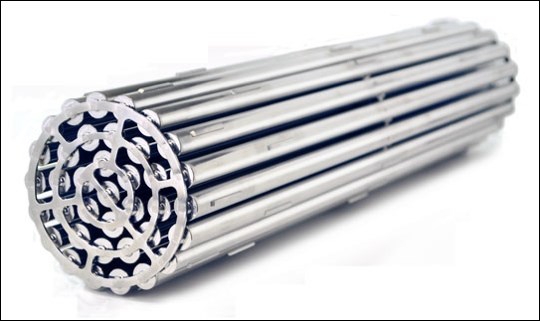Around this time four years ago, I received a call from a loyal reader and frequent tipster of mine. He wanted to talk about nuclear waste storage.
Back then, in 2011, the notion of burying radioactive waste near Creighton was still novel. Rabid opposition had yet to take hold, and most people seemed to be weighing the facts.
My caller that day didn’t say whether he loved or detested the idea, but he did recap a conversation he’d just had with a long-time geologist both of us knew and respected.
The geologist’s conclusion? Creighton’s geology could not sufficiently accommodate the subterranean repository envisioned by the Nuclear Waste Management Organization (NWMO).
I never reported on that conversation. Not only was it secondhand information, but the geologist, as gifted as he was, could hardly be considered an expert on nuclear materials.
I didn’t think much of that phone call until Tuesday morning, shortly after 9 o’clock, when NWMO announced that Creighton was no longer in the running for the repository.
Of all the reasons Creighton could have been yanked from the process, its Canadian Shield geology seemed pretty far down the list.
Creighton’s potential repository bid faced hostility from First Nations – a vital detail since NWMO itself made First Nations support a prerequisite.
There were also hundreds, if not
thousands, of area residents against the concept, including Creighton’s own MLA, Doyle Vermette.
If that weren’t enough, Saskatchewan Premier Brad Wall said that unless province-wide public support shifted in favour of the repository, it would not be allowed in his province.
And yet against such insurmountable odds, Creighton and NWMO continued the learning process.
Now that NWMO has pulled out of Creighton, we as a region can reflect candidly on this experience.
Creighton town council, led by that go-getter Bruce Fidler as mayor, merits acclaim for at least exploring this option.
There’s never any harm in a one-industry region sniffing around for economic opportunity, especially since the public was always going to have the final say on this project.
Let us also applaud the countless residents who made their opinions on the repository
whether for or against. In an era of widespread apathy, they showed they are passionate about the future of our area.
Did opponents go too far? At times, yes.
Some of them were needlessly combative and ill mannered; others placed more faith in research from the dark corners of the Internet than in objectively legitimate sources.
That said, I can understand why the process may have frustrated those on the “no” side.
When NWMO said it absolutely needed First Nations support, and then got First Nations resistance, it was difficult to see how or why the process could move forward.
And if opponents could be accused of presenting sham data, then so too could some members of the Community Liaison Committee (CLC), the bridge between the public and NWMO.
By a narrow vote last year, the CLC asked councils in Creighton, Denare Beach and Flin Flon to remove publicly accessible nuclear-waste protest signs that bore the familiar international symbol for radiation (known as the trefoil).
CLC members argued that it was illegal to depict the trefoil in the absence of radiation. In this case it wasn’t, as I confirmed with a simple email to the Canadian Nuclear Safety Commission.
Opinions
Over the past four-plus years, I have written multiple opinion pieces on nuclear waste storage.
In the process, repository supporters have speculated that I was against the project while opponents hypothesized I was for it.
My personal position has always been convoluted.
On the one hand, I agree that the bulk of mainstream science indicates the repository would have been quite safe.
I could never summon the paranoia necessary to believe that so many scientists all over the world were so deeply in the pocket of the nuclear industry that they would foist dangerously bogus data on a hapless public.
On the other hand, this was never strictly a question of safety.
Note that building the repository near Creighton would have been unbelievably divisive, especially if our neighbouring First Nations maintained their disagreement.
Note also that some very good people in our region wondered how such a massive project, with its many hundreds of jobs, would have altered the character of our communities. As one of them asked: “Do we want to be an Alberta-like boom town where everything costs a fortune?”
Then there’s the simple fact that science doesn’t know everything. Worse, it doesn’t always know that it doesn’t know everything.
Against such a backdrop, and as it relates to a venture of this magnitude, I can appreciate why people would loath to kneel at the altar of science.
What bothered me about the repository debate, probably more than anything, was how opponents were seemingly maligned as dim-witted, uninformed bumpkins.
I believe that even if someone is a dim-witted, uninformed bumpkin, they still get a say. In a democratic society, we all get to form our opinions, for reasons of our choosing, without having to convince those who disagree with us that we have sound judgement.
It’s all a moot point now, though. Canada’s nuclear waste is not coming to Creighton. All of those jobs, and all that controversy and division, will become someone else’s benefit – and problem.
Local Angle runs Fridays.




